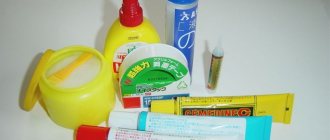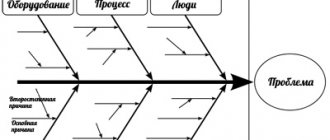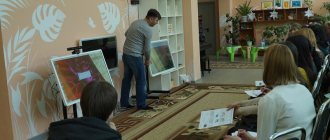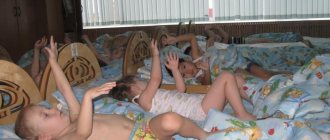Practical work on technology (grade 6)
Practical work on technology for 6th grade
Practical work No. 1
Topic: Onion harvesting technology
Purpose: to introduce the rules for harvesting onions
Equipment: pitchforks, box 15-20cm high, scales, paper labels, notebooks, pens and pencils.
Work order
Exercise 1. Harvesting onions
Pull the onions out of the ground without digging or with digging with a fork. Shake the bulbs from the stuck lumps of soil. Sort the onions into marketable and non-saleable ones (immature, diseased, small, damaged bulbs). 4. Transfer the boxes with the sorted bulbs under a canopy or to a well-ventilated area.
Practical work No. 2
Topic: Preparing the site for the autumn main tillage for cucumbers and tomatoes.
Purpose: to introduce the technology of preparing a site for autumn tillage
Equipment: rake, shovel, bucket, half-ripe manure, mineral fertilizers (doses prepared by the teacher), scoop, work coat, mittens (gloves), water, soap, towel.
Work order
Remove plant residues from the site. Scatter prepared doses of phosphorus and potassium mineral fertilizers evenly over the site. Spread organic fertilizer - half-ripe manure - over the site: fill half a bucket with manure (4-5 kg) and pour out in piles at a distance of 1 m from each other. Rake evenly piles of manure around the area. Clean tools and hand them over. Organize your clothes and wash your hands with soap.
Practical work No. 3
Topic: Determination of wood defects
Goal: to teach how to identify wood defects
Equipment: samples of wood defects, pencil, textbook, notebook.
Work order
Examine wood samples that have various defects. Name these defects and their origin. Select wood blanks without defects for the manufacture of your intended product. Practical work No. 4
Topic: Drawing up a diagram for cutting logs into lumber
Purpose: to introduce the rules for cutting logs into lumber.
Equipment: lumber samples, ruler, compass, longitudinal hacksaw, pencil.
Work order
Based on the given thickness of the boards, as well as the diameter of the log and the width of the cut, draw on a scale a diagram of their cutting on a sawmill frame. Determine how wide the board will be. Make a diagram for cutting the board into slats of given sizes for your product. Practical work No. 5
Topic: Design of wood products
Goal: To introduce the technology of designing wood products
Equipment: project bank, notebook, pencil, ruler, product assembly drawing
Work order
As instructed by your teacher or for your own creative project, come up with several versions of the same wood product and complete sketches or technical drawings. Select the best option. Consider whether the product you designed will have sufficient strength and reliability; will it be manufacturable? To develop your own assembly drawing, read the assembly drawing of the given product and the drawings of its parts.
Practical work No. 6
Topic: Introduction to the properties of metals and alloys, types of rolled products
Purpose: to introduce the properties of metals.
Equipment: samples of metals and alloys, a plate for cutting metal, a hammer, a chisel, a vice, a file, samples of rolled products.
Work order
Identify the types of metals and alloys by patterns and characteristic features. On a metal cutting plate, try to forge metal samples with a hammer and cut them with a chisel. Make a conclusion about their malleability and hardness. Fasten various samples of metals and alloys in a vice and file them. Draw a conclusion about their machinability by cutting. Consider the types of rolled products. Draw the profiles of the rolls used to obtain these types of rolled products.
Practical work No. 7
Topic: Development of an assembly drawing of a product using a caliper
Purpose: to introduce the use of calipers to develop an assembly drawing of a product
Equipment: a product of three or four parts, calipers, notebook, pencil, pen.
Work order
Select the simplest assembly unit of three or four parts (clamp, frame, stand) and draw up a specification for it. Measure with a caliper and write down in a notebook the dimensions of the assembly unit required for drawing on the assembly drawing. Draw the assembly unit to scale and in the required projections. Measure accurate to tenths of a millimeter and write down in your notebook the dimensions of the shaft connection and the hole in it.
Practical work No. 8
Topic: Sawing rolled metal with a hacksaw
Purpose: To introduce the rules of sawing rolled metal
Equipment: vice, hacksaw, diamond or flat file, workpieces.
Work order
Mark the workpiece for sawing with a hacksaw, for example, to cut out an “ear” part from a corner. Secure the workpiece in a vice and file the cut points with a file. Sawing the workpiece with a hacksaw. File the sharp edges. Mark and cut the workpiece - the pipe - into rings for file handles.
Practical work No. 9
Topic: Cutting metal blanks with a chisel
Purpose: To introduce the rules of cutting metal blanks
Equipment: metal sheets, vice, chisel, plate, hammer, goggles, brush, dustpan.
Work order
Select and mark sheet blanks for cutting with a chisel on a plate for making products (box, rim, ring). Prepare the necessary tools and devices. Put on safety glasses. Cut the sheet into pieces according to the technology outlined in the textbook, observing safety rules. Prepare the workpiece for cutting in a vice. Mark it, securely fasten it and cut it. Clean up the work area.
Practical work No. 10
Topic: Filing metal blanks with a file.
Purpose: To introduce the rules of working with a file
Equipment: vice, files, needle files, metal blanks, ruler, square.
Work order
Select workpieces or products for filing external surfaces with a file. Select and check the files. Mark and securely secure the workpiece in a vice. File the surfaces along the marking lines. Check the dimensions and straightness with a ruler, and the angle with a square. Select and mark the blanks for filing the internal contours: rectangle, triangle, circle. Select the appropriate files and needle files and file the contours. Check the dimensions with a ruler.
Practical work No. 11
Topic: determination of the raw material composition of materials and study of their properties
Goal: to teach how to determine the raw material composition
Equipment: samples - four scraps of linen, cotton, wool and silk fabric; needle, scissors, magnifying glass, crucible - a vessel made of fireproof material for igniting threads.
Work order
Pull a thread from each sample and set it on fire in the crucible. Analyze the type of flame, the smell and the ash remaining after burning. By appearance and touch, determine the shine, degree of smoothness and softness of each shred. Determine the creasing of the shreds: hold each of them in your fist, hold for 30 seconds, and then open your palm. Pull the thread out each piece of scrap, examine it and tear it, evaluate the strength of the threads, compare the type of break and crimp. Determine the frayability of the fabric: using a needle, first separate one thread from the fabric, then two, three, etc. Having summarized the data obtained, determine the raw material composition of each sample. Draw and fill out the table with. 40-41.Give a rationale for selecting fabric for your project item.
Practical work No. 12
Topic: taking measurements and making patterns
Goal: teach how to take measurements and draw patterns
Equipment: measuring tape, tape to fix the waist line, a large sheet of checkered paper, ruler, pencil, eraser, scissors.
Work order
Exercise 1. Take the measurements needed to make your project item and record them in a table in your workbook.
Task 2. Make a pattern for a project sewing product.
1.Make a pattern for the product you have chosen as a design using any of the methods you have studied.
2. Model the pattern.
Practical work No. 13
Topic: Cutting out parts of a design product
Purpose: to cut out the details of the design product
Equipment: pattern of the project product, ruler, tailor's scissors, pins, tailor's chalk, fabric for the project product, adhesive pad, iron, ironing board, ironing board.
Work order
Exercise. Cut out and duplicate the details of the design product.
Fold the fabric along the grain thread with the right side inward. Lay out the pattern pieces so that the direction of the arrows on them coincides with the grain thread of the fabric. Pin the pattern pieces with pins. Mark the seam allowances. Cut out the pieces along the allowance lines. Duplicate the cut details of your product.
Practical work No. 14
Topic: making samples of hand stitches
Goal: To teach varieties of hand stitches
Equipment: white chintz with a small pattern so that the stitches of the seams are visible; patterns size 130X40 and 130X20 mm; ruler, tailor's chalk, sewing thread, scissors, pins.
Work order
Task 1. Perform a copy line.
Draw any line on the pattern, preferably through the center parallel to the long side. Cut out the piece with a 15mm seam allowance on all sides, folding the fabric in two layers with the right side inward. Do not split the pattern from the cut piece. Transfer the contour lines of the pattern and the inner line you drew to the cut piece using...
Lesson plan on technology (girls) 6th grade
Technology lesson plan
Chapter:
"Cooking";
Subject:
“Technology of primary processing of fish. Technology of preparing fish dishes";
Class:
6
Goal setting:
- Subject:
To familiarize students with the types of fish, the role and importance of fish dishes in human nutrition;
- Familiarize yourself with the types of fish and the signs of their good quality;
- Develop skills in cooking fish.
II. Metasubject UUD:
2.1. Cognitive: formulate the skills to compose, analyze, compare, pose and formulate a problem, independently create an algorithm of activity;
2.2. Regulatory: to develop the skills of setting goals, modeling situations, planning one’s activities, conducting reflection, evaluating one’s work and actions;
2.3. Communication: develop skills in constructing a dialogue/monologue, organize student cooperation.
III. Personal UUD:
Formulate motivation and self-motivation for studying the topic; development of hard work and responsibility for the quality of one’s activities; formulate the foundations of civic identity.
IV. Career guidance guidance: formulate ideas about the profession of a cook.
Methodological equipment of the lesson:
Material and technical base:
— technology room;
— drawing supplies (sketchbook, pencils, ruler)
Didactic support:
- textbook: Sinitsa N.V. Technology. Technology of housekeeping: 6th grade: a textbook for students of general education institutions / N.V. Sinitsa, V.D. Simonenko. – M. Ventana-Graf, 2013.- 192 p.: ill.
- workbooks.
Teaching methods:
story; conversation; presentation demonstration.
Form of organization of students’ cognitive activity:
frontal.
Vocabulary work:
nutritional value, minerals, chemical composition, poaching.
Lesson type:
combined lesson – a lesson in acquiring new knowledge and a lesson in consolidating knowledge.
During the classes.
- Organizing time
The teacher enters the classroom and greets the students. Then the teacher notes those who are absent, checks that everyone has work clothes, workbooks and completed homework. If everything is there, then you can start the lesson.
- Updating new knowledge.
In today's lesson, students will become familiar with the topic “Technology of primary processing of fish. Technology of preparing fish dishes,” therefore, before presenting new material, you should ask a few questions to find out the students’ initial level on this topic.
Questions:
- What types of fish do you know?
- What is the nutritional value of fish?
- What methods of determining the good quality of fish do you know?
- Presentation of new material.
In today's lesson we will study a new topic “Technology of primary processing of fish. Technology for preparing fish dishes." Purpose of the lesson: to get acquainted with the role and importance of fish dishes in human nutrition; become familiar with the types of fish and the signs of their good quality; learn fish cutting technology.
Plan for presenting new material:
- Nutritional value of fish;
- Types of fish and fish products;
- Signs of good quality fish;
- Fish cutting technology;
- Technology for preparing fish dishes.
Nutritional value of fish
In terms of nutritional and culinary qualities, fish is not inferior to meat, and in terms of ease of digestion it even surpasses it, which is one of the most significant advantages of this product. The chemical composition of fish is not constant. It significantly depends not only on the species and physiological state of the fish, but also on its age, sex, habitat, fishing time and environmental conditions.
The suitability of fish for processing for food purposes largely depends on the chemical composition, which is represented mainly by water, proteins and fats. It contains significantly less minerals, non-protein nitrogenous substances, carbohydrates and vitamins. The ratio of nutrients in fish depends on its type, sex, stage of development, period of fishing, nature of nutrition, and also on how deep the post-mortem changes have occurred during storage of the fish. The content of individual substances in different organs and muscles of the same individual is not the same. The mass fraction of water in the muscles of fish depends on the species, fatness, physiological state and can vary widely from 53% (river eel) to 89% (smoothhead and blue catfish), 88–89% in seaweed and the edible part of sea cucumbers. The mass fraction of proteins in hydrobionts ranges from 7–8% (sea cucumber, cucumber, smoothhead) to 22–23% (tuna, chum salmon, bonito, yellowtail snapper, whale meat). The share of complete proteins (with the exception of sea cucumbers) is 95–97% of the total amount of proteins in the meat of fish and non-fish aquatic organisms. Protein digestibility reaches 97%.
The taste properties of fish products are largely determined by nitrogenous extractive non-protein substances, of which the main share is made up of free amino acids and guanidine derivatives.
The families of anchovies, herrings, salmon and some other fish are distinguished by the presence of an active complex of proteolytic enzymes that play an important role in the ripening of salted fish products.
In the body of aquatic organisms, the location of fat accumulations and their relative content in tissues is not constant and depends on numerous factors, in particular, on the species, gender, age, physical condition, etc. In muscles, the mass fraction of fats can range from 0.2–0.6% (haddock, squid, pollock, cod, crustaceans) up to 30–34% or more (river eel, Siberian sterlet, Caspian lamprey, herring during the feeding period), in the liver of cod and sharks it reaches 70%, in the caviar of sturgeon and salmon - 17 %.
Based on fat content, fish are divided into:
skinny (up to 2% fat): marten, cod, pike, etc.;
medium fat content (from 2 to 8%): sea bass, Caspian sprat, etc.;
fatty (over 8%): sturgeon, mackerel, whitefish, saury;
especially fatty (from 15 to 34%): Pacific and Caspian lampreys, during the feeding period - herring, carp, salmon.
Types of fish and fish products
The most valuable fish are the sturgeon and salmon
– oster, beluga, stellate sturgeon, sterlet, salmon, chum salmon and others. Sturgeon fish (specifically representatives of the sturgeon genus - Acipenser) are of great commercial importance; they were originally called red fish - for their special value. Their meat is highly valued; the famous black caviar is an even more valuable product; In addition, the swim bladder provides valuable glue; the dorsal string is used as food under the name elmfish. The meat of all salmon tastes excellent, and most of them have become objects of fishing and fish farming. Salmon are one of the most important commercial fish in the world, producing catches of 0.5-1 million tons per year - about 3% of the total marine fish catch (data from the 60-70s). In 2005, 1 million tons of farmed salmon were caught in Norway alone.
A large group of fish is the carp
– carp, crucian carp, bream, carp, silver carp, rudd and others.
A large group of fish from the cod
– cod, haddock, pollock, navaga, pollock, silver hake.
We sell live, chilled, frozen, salted, smoked, dried and dried fish, as well as canned and preserved fish.
Signs of good quality fish
The easiest way to detect stale fish is by smell when cooking a test piece in a sealed container.
When determining the quality of frozen fish, you can stick a knife heated in boiling water into the thickness of the meat, and then quickly bring it to your nose, and to check the quality of salted or smoked fish, use a wooden pin, which is also used to pierce the fish and, turning several times in the thickness of the meat, bring it to the nose. nose
It is also necessary to carefully examine the appearance of the fish. Live fish must be healthy, well-fed, and active. Its back is fleshy, not pointed, the gills rise and fall shallowly and evenly, and there are no spots or damage on the scales. Fish swim not on the surface, but in the water column.
Fresh chilled fish should have a dense, rigid body (the fish should not bend when placed on the hand), bright red gills, bulging, transparent eyes, smooth, shiny scales, tightly adjacent to the skin, hard meat, tightly connected to the bones, little mucus and it's transparent. When pressed with a finger, a hole on the fish’s body does not form or is quickly and completely filled. In water, fish drown quickly.
Frozen fish can be considered completely benign if its scales fit tightly to the skin and there are no spots or marks of bruises on it. The skin of scaleless fish should be smooth.
Fish cutting technology
- Clean the fish from scales: holding the tail with your left hand, with your right hand, using a kitchen knife, scraper or grater, remove the scales from the fish in the direction from the tail to the head. Rinse the fish.
- Cut the belly. Using a sharp knife, make a cut in the abdomen from the head to the caudal fin.
- Carefully remove the insides so as not to damage the gallbladder. Hold the knife in your right hand, hold the fish by the edge of its belly with your left hand. The abdominal cavity must be cleared of black film.
- Remove fins. First, the sharp dorsal fin: make an incision along its entire length on both sides with a sharp knife. After this, holding the fish by the tail with your right hand, pull out the dorsal fin with a sharp movement from the tail to the head with your left hand. Cut off the remaining fins with a knife or scissors. Cut off the head.
- Cut through the film covering the spine: after cutting off the head, open the carcass with your left hand and use a knife with a sharp end to cut the film covering the spine. Wash away accumulated blood clots under running water.
- Flatten the fish. Cut a large (more than 1.5 kg) carcass into two halves. Holding the upper part with your left hand, use your right hand to trim the meat with a sharp knife along the back from head to tail, moving the knife tightly along the vertebral bone (separate the fillet).
- Slice the fish. Cut the prepared (cleaned and washed) carcass or cut into two halves (flattened) fish into portions, starting from the head part. To do this, first cut the meat from the top to the vertebral bone. Then, with a light blow of the knife, chop it and cut the meat of the lower part of the fish. Cut pieces for cooking at right angles, and for frying and poaching - at an angle of 30°. If the fish is prepared for cooking, then to prevent the pieces from falling apart, cut the skin on each of them in two or three places.
Technology for preparing fish dishes
Heat treatment of fish includes boiling, poaching, frying, stewing and baking.
Cooking - heating a product in water, broth, milk or steam.
Allowance – i.e. cooking in a tightly sealed container with a small amount of liquid.
Stewing - the product is poured with a small amount of sauce or broth, spices are added. Cover with a lid and bring to
readiness.
Frying - foods are heated over high heat in fat or hot air. There are two ways to fry fish - the main way with a small amount of fat and deep-frying (immersion in heated fat).
Baking – frying a product in the oven.
Depending on the method chosen, cooked portions or whole fish can be rolled in flour, breadcrumbs (breaded), or dipped in batter (batter made from flour, milk, eggs and salt). The fish can be baked whole or in pieces.
- Induction training.
In today's lesson, students will create a crossword puzzle on the topic covered, using textbooks.
Criteria for evaluation:
“5” - assigned if the work was completed correctly in a given time, independently, in compliance with safety regulations.
“4” - the work was completed correctly in a given time, accurately and economically, but with violations when performing some operations.
“3” - the work was completed on time, there were violations in the execution sequence, the sample was drawn up carelessly.
“2” - the student did not cope with the work independently, the work was sloppy, there was a violation in the technological sequence.
- Practical work.
- Current briefing.
During the work, the teacher monitors the implementation of safety and health regulations and labor discipline. There may be problems with completing this work, so first the teacher tells you how to do a crossword puzzle correctly. During the work, group and individual instructions are possible.
- Completion of practical work.
Dictionary of carpentry terms
dictionary of carpentry terms
Teacher: Dolzhenko Evgeniy Petrovich
A
ABRASIVE - a hard material applied to various surfaces for the purpose of leveling the structure of wood (grinding)
ACANTHUS is an architectural decoration in the form of stylized leaves and stems of acanthus in various types of ornament.
ANCHOR (anchor bolt) – a large hardware (bolt) designed for connecting various structures, such as the following: concrete, wood, plastic, etc.
ARCH - an element in architecture, it can be either free-standing on pillars or located in a pier. The top has the shape of an arc going from one beam to another or from wall to wall
B
BEAM – a large-sized architectural element, square or rectangular in cross-section. Can be used as a supporting structure. Less commonly used as decorative and decorated with flutes or strips
BALCONY - in carpentry, this term applies to balustrades (a row of balusters with a handrail) that are not located on the stairs
BALUSTRADE - a row of balusters and handrails
BALANCER – vertical stair element. When climbing the stairs, the height gradually gains and there is a risk of falling, in order to prevent this from happening, balusters are placed vertically on the steps or string and are actually a fence, so as not to fall out of the stairs
BOLT is a fastening element, its main part looks like a cylinder with a thread.
LOG – cross-cut and processed wood.
BEAM - lumber has the shape of a rectangle in cross-section, also used as a load-bearing structure
BAR - the same beam but with a small cross-section (width up to 100 mm)
IN
LINING - a molded product along two smaller edges processed with a tongue-and-groove cutter, thanks to which the lining fits well together.
VERANDA - a small architectural structure, usually attached to the main building
WORKSHOP - a table for carpentry, plumbing and other work. The main workplace of a carpenter. As a rule, the length of the workbench is 2000 mm, width 700 mm, height 850 - 900 mm. Has various shelves for tools.
The table usually has sockets for using hand tools. A vice is usually installed in the same way.
HANGER - a piece of furniture designed for temporary storage of outerwear and umbrellas
SCREW - a cylindrical product with a thread
Stained glass window is a kind of window opening with decorative colored glass. Can be installed both in the wall and in the ceiling
WOOD HUMIDITY is the main indicator of wood quality, determined by the percentage
WATERPROOF PLYWOOD - plywood, in the manufacture of which special glue type D 4 was used, which resists moisture well. Used for external construction work.
FALLING OUT KNOCK - a knot that has no connection with the main tree in which it is located. As a rule, wood with such knots is the worst grade.
G
DIMENSION – width, thickness, length, etc.
NUT - hex, round, crown, wing elements with a threaded hole inside
NAILS are one of the simplest fasteners. Serves for fastening non-supporting elements.
NAIL PULLER - hand tool for removing nails
BLIND THREAD - non-through thread
ANNUAL LAYER - a layer of wood growth of trunks, branches and roots during one growing season
PRIMERS are chemical compounds applied as the first layers to wood. Serves as protection against deformation and moisture.
D
DECOR - a system, a set of decorative elements.
DECORATIVE LININGS - overlay decorative elements glued to various furniture elements
DETAIL – part of the product, except for hardware.
SOFA - an element of furniture intended for relaxation, has a back and a seat
SOFA BED - a sofa that can be converted into a bed. Can be either single or double
CIRCULAR SAW (circular saw, circular saw) – an electric saw with a cutting disk.
LENGTH – as a rule, the largest size of the product
ALLOWANCE TOLERANCE - the size indicated on the drawing for the purpose of trimming during installation
BOARD - lumber from which the final product is made
WOOD SPECIES - genus and species of woody plants
HAND DRILL – a hand tool for drilling holes. The hole itself is drilled directly with a drill. Depending on the drill, you can work with wood, metal or concrete.
DOUBLE – fastening element. Used for fastening products to concrete
Z
WINDER STEPS – have a triangular or trapezoidal shape. Used for turning on stairs. Suitable for all types of stairs except straight ones
WOOD BLANK – boards glued together. Has a shape larger than the final product.
SAW - the place where you took a drink is called a gash
PROTECTIVE TREATMENT – chemical treatment of wood carried out at the time of painting in order to increase the longevity of the wooden product.
Countersinking - a multi-blade cutting tool for processing parts in order to obtain conical or cylindrical recesses, reference planes around holes, chamfering center holes
GOLDEN RATIO - the principle of the Golden Ratio has been used since ancient times to find the most balanced proportions between architectural parts of buildings or parts of architectural structures. It is as follows: dividing the whole into two unequal parts is proportional in the case where the smaller part is “minor” (approximately 38%), relates to the larger part – “major” (approximately 62%), as well as the larger one (“major” ) to the whole and vice versa.
AND
INTERIOR - the architecture of the interior of a building.
TO
CUTTING - a figuratively processed edge of a product with a milling cutter. On the steps it serves not only as a decorative function, but also to ensure that there are no sharp corners that could be stepped on.
CHANNELURES are vertical strips made with a special cutter. Used on pillars, columns, platbands, etc.
CAPITAL - the finishing element of a column or pilaster. The base is square.
CORNICE (from Greek) – a decorative element located in the corner between the wall and the ceiling. It can also be installed in furniture elements.
GLUED TIMBER - A product consisting of layers of lumber with approximately parallel grains and glued together.
CONSTRUCTION (from Latin) - structure, device, construction, plan, relative arrangement of parts (structure, project, etc.).
BARK is the outer covering of the trunk and branches of a tree.
WOOD WRAPPING is a change in the shape of a wood product
KOSOUR is the supporting structure of the staircase on which the steps stand. It has the appearance of a comb.
CHAIR - a piece of furniture for sitting one person, with a backrest, with or without armrests
BED is a piece of furniture designed for sleeping with a mattress, with one or two headboards. A sofa bed can also be folded into a bed
BRACKET – L-shaped fastening element
L
JOINTS - logs, beams or metal beams located horizontally and providing support for the floors of a building or platform.
VARNISHES – liquids for application to wood to protect the surface
LAMINATION - lining chipboards and fiberboards with paper impregnated with synthetic resins.
BAND SAW – woodworking machine. It is used for cutting wood with a saw that has the shape of a tape.
TIMBER - wood in the form of standing or felled trees or products of its processing. Does not include wood boards or wood chips.
STAIRWAY is a structural, functional element that provides vertical connections in the form of a series of steps. Most often this term is associated with a staircase as an element of a building or structure. There are many types of stairs; in this section we will try to describe in as much detail as possible the principles of construction and types of stairs.
STAIRWAY - a room provided for stairs.
FLOOR OF STAIRS - an inclined part of a staircase - a structure consisting of a number of steps connecting the landings.
FLIGHT OF STAIRS - free space limited by flights of stairs and landings.
deciduous wood - wood from trees of the botanical group of dicotyledonous plants.
FRONT SURFACE – working surface of a wooden product
JIGSAW - a hand tool for cutting along the contour of wood products
M
LAYOUT - model of the product in proportion
MALKA - carpentry tool for measuring angles
ATTIC - attic
SOLID WOOD BOARD – a slab made from boards glued together.
FURNITURE - mobile or built-in products for furnishing residential and public premises and other areas of human habitation
HARDWARE – various fastening elements.
MULTI-FLIGHT STAIRS - stairs that have more than two flights.
N
NAGEL - a wooden rod element intended for fastening wooden products (replaces nails).
OVERLAYS – decorative elements that are applied to a product for the purpose of decoration.
CRYSTAL - an element framing a door or window opening.
HACKSAW – a saw-type hand tool. Used to cut the product to the desired size
ABOUT
COATING – used in architecture to save wood.
FORMWORK is a removable wooden or metal form in which concrete mortar is placed during the construction of concrete and reinforced concrete structures.
SAWDUST (shavings) - wood processing waste
ORNAMENT - a pattern is intended to decorate various objects.
SCREWDRIVER - a hand tool used to work with various fastening hardware.
CYLINDERED LOG - round timber processed to give it a cylindrical shape
P
PANEL - a decorative element at the bottom of a wooden wall
PARQUET is a material in the form of thin planed planks (rivets) made of hard wood, intended for covering floors. There are block parquet, panel parquet and inlaid parquet.
FLOORS - a structural element dividing a building into floors.
RAILING (handrail) - an element of the staircase, installed on a baluster, functionally it is a barrier between the floors of the flight of stairs
TIMBER – wood material obtained by longitudinal sawing of logs.
PILASTR(A) (from French) – the architectural element on top has a more massive shape. Can be a load-bearing structure because starts from the floor and ends at the ceiling
Plinth (from Greek) – a molding element is installed between the wall and the floor.
SHELF – a product used in furniture is installed horizontally. Functionally used to store something
CROSS SECTION - a section at right angles to the longitudinal axis of the timber
CROSS SECTION OF WOOD - a cut running parallel to the direction of the grain of the wood
HAND RAIL - an element of a staircase, installed on a baluster, functionally serving as a barrier between the floors of a flight of stairs
OPENING - an opening in the walls for windows or doors. It’s also rare to call a staircase shaft this way.
FLY - one or more flights of stairs between one floor
R
THINNERS - chemical liquids used in painting to dilute varnishes and paints to reduce viscosity.
LAYOUT (glazing bead) – a molded piece of small cross-section, used to close the joints between elements
SOLVENTS - chemical liquids used in painting to dilute varnishes and paints to reduce viscosity.
RESTORATION - restoration of interior elements to their original form
BEAM - a horizontal element of a building structure (beam, purlin). It connects posts in frames, supports in frames, and rafters in roofs.
PLANE is a hand-held woodworking tool for manual planing of wood, consisting of a wooden or metal block, a cutter (knife) and a clamping wedge.
MEASURING ROULETTE - a tool with a bar scale designed for measuring linear dimensions. The scale length of a metal tape measure is 1-100 meters, and a non-metal tape measure is 1-20 meters. The most common are pocket tape measures up to 8 m long.
WITH
PILES are wooden, metal or reinforced concrete “rods” that are buried in the base of buildings and structures in order to transfer loads to dense (continental) soils.
DRILL - used to make holes in various materials, as well as for finishing. It has a shank, working and cutting parts, and elements for removing chips. There are screw, spiral, feather, spoon, center (centering), screw, etc.
FURNITURE SECTION - a fruitful finished piece of furniture that has the ability to exist, used as an independent product and is considered a mixed share of blocked products.
BENCH - a piece of furniture intended for sitting several people, with a backrest and armrests or without them, with a seat height equal to or greater than its depth
CHISEL - used for gouging out shallow sockets and holes, removing small thicknesses (planing), trimming planes and protrusions. A chisel is used for cleaning edges and ends, chamfering, shaped cutting, chiseling delicate parts, etc. The blades (blades) of chisels come in different widths (from 3 to 50 mm), depending on the shape - flat (straight), semicircular, with a beveled blade for finishing wood on lathes. More common are chisels with a width of 6 to 30 mm. The chisel consists of a handle and a blade, which is sharpened at an angle of 18-30 degrees. The blades of the chisels are made of steel of the highest quality, the handles are made of strong wood (dogwood, ash, rowan, beech, silver birch), and a cap is traditionally placed on them.
STAND - a pillar that serves as a support for the ceiling.
JOINERY BOARDS - probably panels made of slats, bars or other fillers, covered with veneer on both sides.
SPLIT VENEER - veneer obtained by planing timber or vanches
STEP - part of a flight of stairs that has vertical and horizontal planes. The steps can be straight or winder. Large steps are called platforms. Installed on bowstrings, stringers, metal frames, etc.
DRYING WOOD. DRYING is a hydrothermal treatment of wood that involves removing moisture from it.
T
STOOL - a piece of furniture designed to seat one person, without a back or armrests, with a hard seat (or flooring).
TEXTURE - wood pattern, depends on the type of wood and age.
STAIRBOW STRING – the supporting structure of a staircase, similar to a stringer, but larger. Unlike a stringer, the step is placed in the groove of the bowstring, so the bowstring extends upward beyond the step. On staircases with bowstrings, balusters are placed not on the step but on the string
VICE - an adaptation for clamping and holding parts during the finishing or production process. A vice is mainly used when working with a rasp on a log or on an alloy to strengthen small things that are awkward and delicate to hold with your hands. They consist of a body with 2 lips (fixed and replaceable), between which small change is clamped.
THICKNESS - the size of lumber, determined by the distance between the planes in the place established for measurement in the direction perpendicular to the planes.
END - a rectangular or hexagonal short block (end block), intended for constructing floors or paving road surfaces.
U
CORNER - a carpentry apparatus similar to a chisel, which has the shape of a blade in the form of an angle and works for cutting rows and veins (grooves) of various widths. A cutter is used for carving according to the log.
LEVEL - a device for testing the horizontality and verticality of rows and planes and for measuring roll angles.
F
PLYWOOD - laminated wood that was used, bonded from an odd (3 or more) number of sheets of peeled veneer. The veneer fibers of adjacent layers are directed perpendicular to each other. It is divided into plywood for general and special purposes.
VENING - covering products made of wood or its analogues (MDF) with veneer.
FACADE - the outer, front side of a building.
FRIEZE STEPS - the last step of the flight partially extending onto the floor.
JOINTER is a woodworking machine designed for planing, leveling large surfaces and jointing (fitting) individual parts. It works like a plane.
ACCESSORIES – parts for detachable connection of furniture products
X
CONIFEROUS WOOD is the wood of trees of the botanical group of gymnosperms.
CHEMICAL PROTECTION OF WOOD - protection of wood with the introduction of chemical agents that prevent, complicate or complete the defeat of the object of protection.
C
TsARGA - a frame connecting the legs of a table or chair.
SCRIPING - cleaning the surface of a product from varnish or paint
BASEMENT FLOOR - the floor of a building, the outer walls of which are designed like the base of a large order and the base of the entire building system.
H
ATTIC - as a rule, an unheated extension, limited by the roof and the upper (attic) floor of the building.
Sh
TEMPLATE – drawing on a scale of 1:1
WASHER - a lining in the form of a flat ring in front of the head of a bolt, screw or in front of a nut.
A dowel is a spike inserted with glue into the corresponding sockets of wooden parts and fastening them together.
CABINET is a piece of furniture for storing items of various functional significance. May be with or without doors.
GRINDING - processing with abrasives due to the removal of the surface layer that was used to give the products the desired shape and smoothness
SANDING SKIN - a strong paper or fabric cloth with a narrow layer of hard abrasive attached to it, which was used in different grain sizes. Used for cleaning, grinding and polishing iron parts, cleaning wood and other surfaces. Available in sheets, rolls and in a booklet (for home use).
PUTTY - finishing compounds for leveling surfaces before painting.
VENEER is a thin strip of wood obtained by peeling - cutting off a layer of wood from a rotating section of the trunk. Used to imitate wooden surfaces. It is also used to reduce the cost of products - pine is covered with oak veneer.
STAPING - a piece of wood used to strengthen glass or paneling in the folds.
E
ELECTRIC DRILL - a hand-held machine with an electric drive for drilling holes in metals, wood and other materials.
ELECTRIC PLANER is specialized for planing wood of different species along and across the grain. Consists of a body with a handle-rest, a front support with a device for adjusting the planing depth,
electric motor, gearbox and cable with plug.
ELECTRIC SCREWDRIVERS - an electrified device for screwing and unscrewing screws (screws). It is equipped with special attachments - screwdrivers with straight, cross-shaped or shaped blades.
FLOOR - the longitudinal part of the house, the rooms of which are on the same level.






